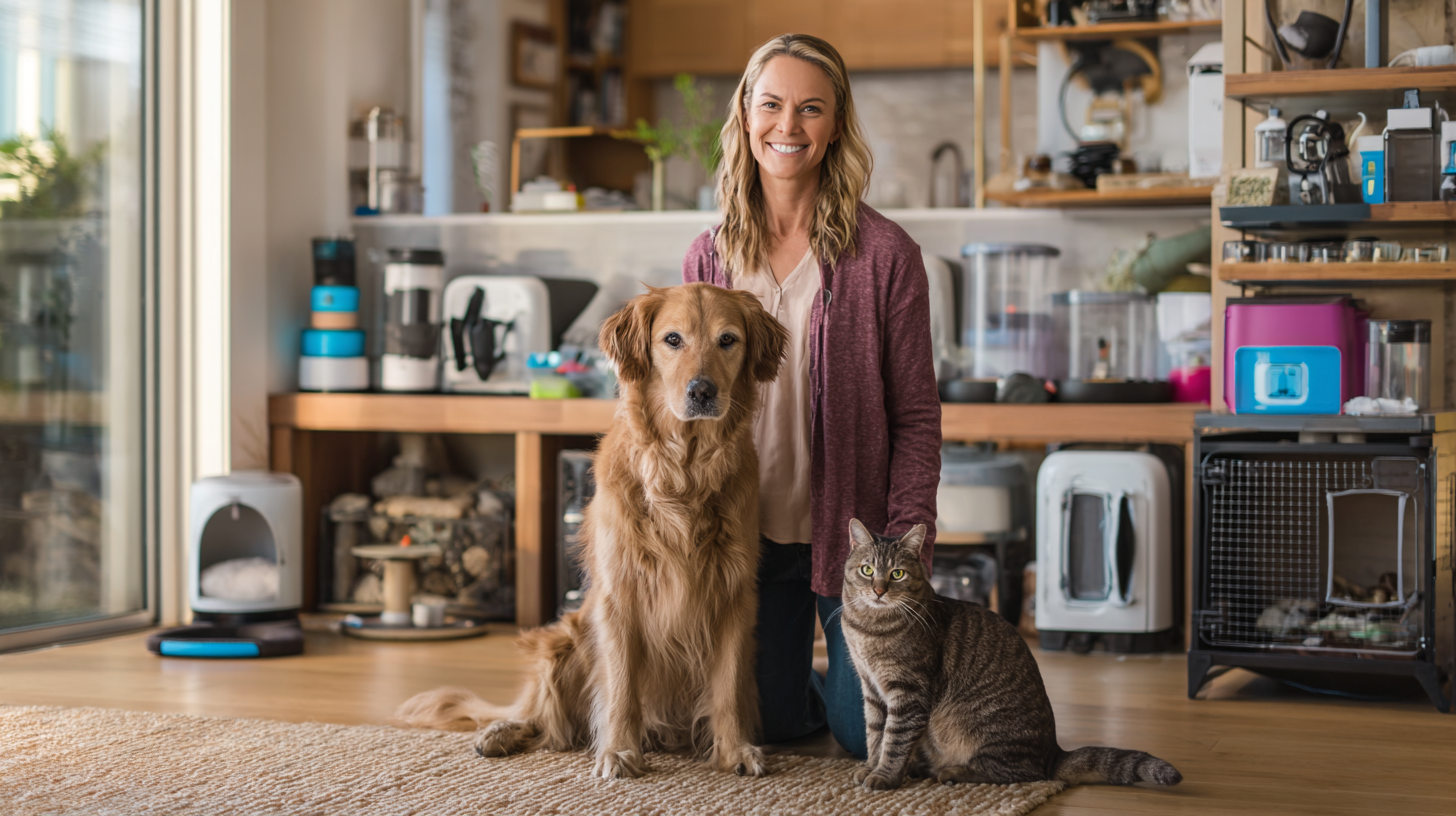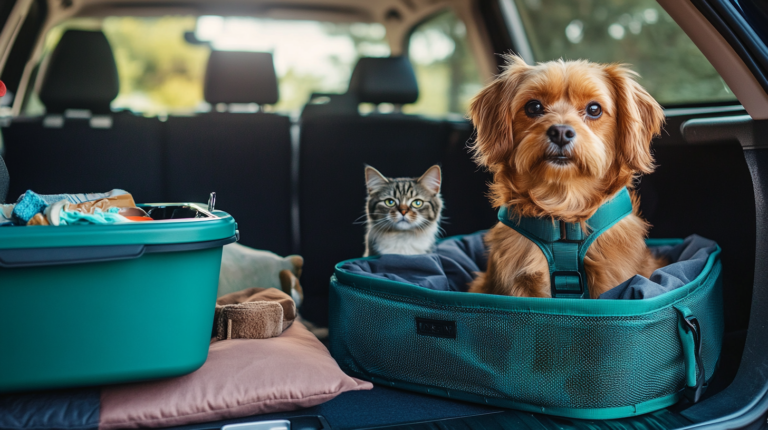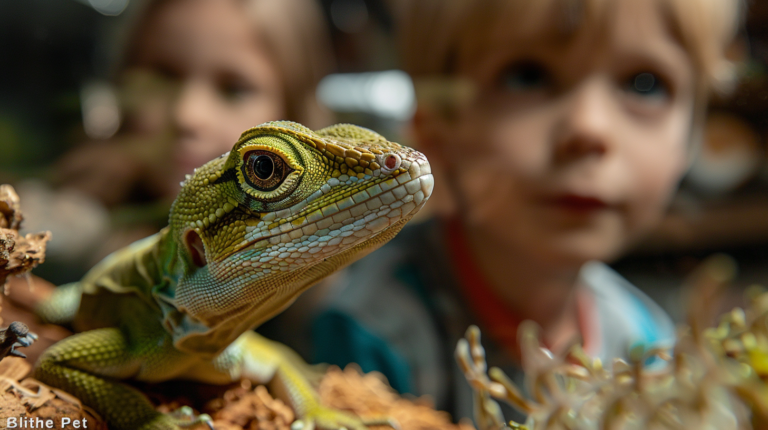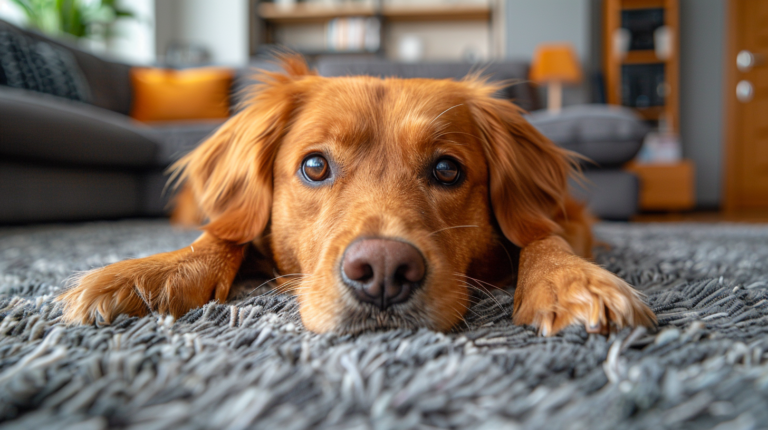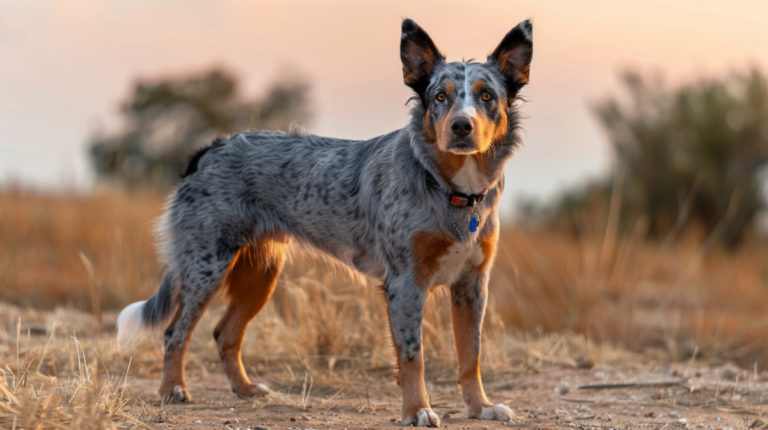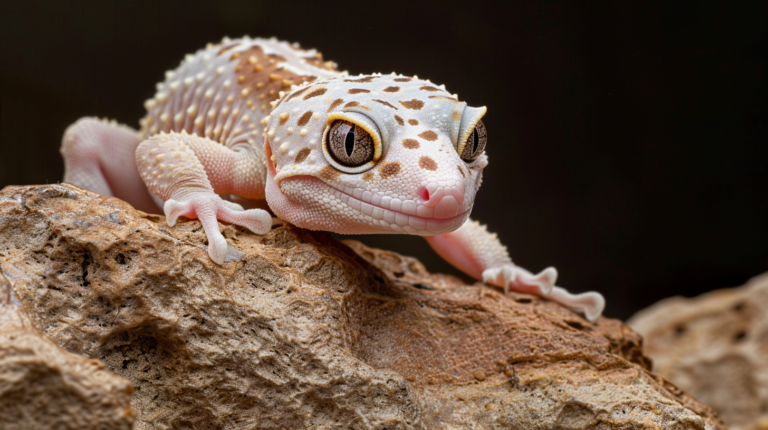Discover 7 essential pet care habits that veterinarians recommend for happier, healthier pets. From nutrition to enrichment, these evidence-based practices transform pet ownership.
Table of Contents
The Foundation of Responsible Pet Ownership

Developing smart pet care habits isn’t just about keeping your furry, feathered, or scaled companions clean and fed—it’s about establishing routines that enhance their overall well-being and strengthen your bond. Whether you’re a first-time pet parent or have years of experience, implementing consistent pet care habits can dramatically improve your pet’s quality of life while making your responsibilities more manageable.
According to the American Veterinary Medical Association, over 85 million U.S. households have at least one pet, yet veterinarians report that preventable health issues remain the most common reason for visits. This revealing statistic highlights the critical importance of establishing proper pet care habits early and maintaining them throughout your pet’s life.
In this comprehensive guide, we’ll explore seven essential pet care habits that veterinarians, animal behaviorists, and experienced pet owners unanimously recommend. By incorporating these practices into your daily routine, you’ll create an environment where both you and your pet can thrive together for years to come.
1. Establishing Consistent Nutrition and Feeding Schedules
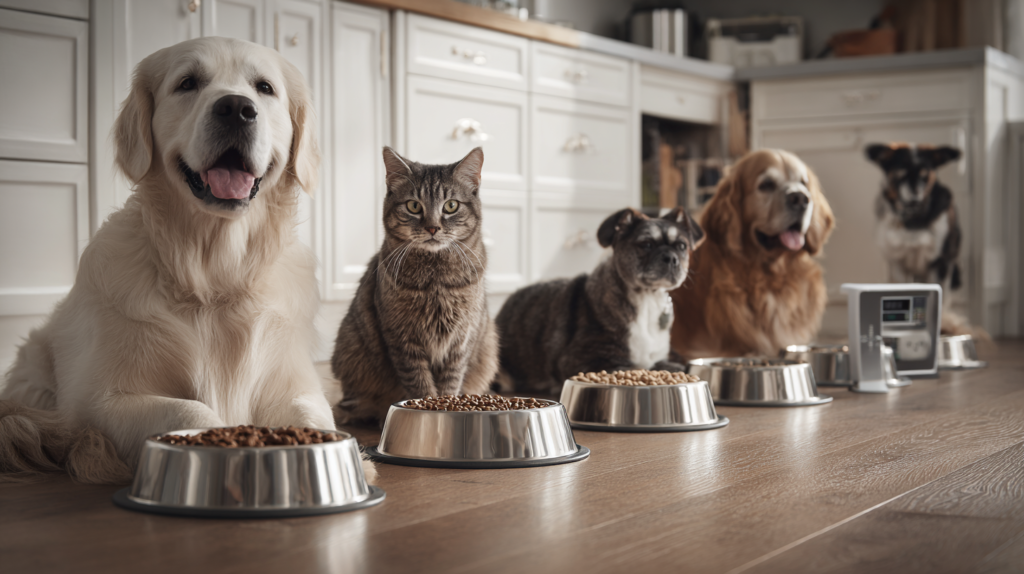
Understanding Your Pet’s Nutritional Needs
One of the most fundamental pet care habits involves providing proper nutrition tailored to your pet’s specific needs. Dr. Sarah Johnson, DVM and animal nutritionist, emphasizes that “nutrition is the foundation upon which all other aspects of pet health are built.”
Different pets have vastly different dietary requirements:
- Dogs: Require a balanced diet of proteins, carbohydrates, fats, vitamins, and minerals. Nutritional needs vary based on breed, size, age, and activity level.
- Cats: As obligate carnivores, cats need diets higher in protein with specific amino acids like taurine that they cannot synthesize themselves.
- Small mammals: Guinea pigs require vitamin C supplementation, while rabbits need high-fiber diets for proper digestion.
- Birds: Seed-only diets are insufficient; most pet birds thrive on varied diets including pellets, fresh fruits, and vegetables.
- Fish and reptiles: Require specialized diets specific to their species and habitat.
Creating a Feeding Schedule
Consistency in feeding times represents another crucial element of healthy pet care habits. A 2022 study published in the Journal of Veterinary Behavior found that pets with regular feeding schedules showed fewer behavioral problems and maintained healthier weights than those fed irregularly.
| Pet Type | Recommended Feeding Frequency | Benefits of Schedule |
| Dogs (adult) | 2 times daily | Improves digestion, regulates elimination |
| Cats (adult) | 2-3 times daily | Prevents gorging, reduces hairballs |
| Small mammals | 1-2 times daily (plus hay/grass) | Maintains dental health, prevents digestive issues |
| Birds | 1-2 times daily | Encourages natural foraging behaviors |
| Fish | Once daily (specific to species) | Prevents water contamination |
Pro Tip: Use measured portions rather than free-feeding to prevent obesity, which affects approximately 60% of cats and 56% of dogs in the United States, according to the Association for Pet Obesity Prevention.
Monitoring Water Intake
Hydration is an often overlooked aspect of pet nutrition. Fresh, clean water should be available at all times as part of your daily pet care habits. Consider these strategies:
- Clean water bowls daily to prevent bacterial growth
- Provide multiple water stations throughout your home for multi-pet households
- Consider pet fountains for cats and dogs who prefer running water
- Monitor water intake changes, as they can signal potential health issues
Dr. Michael Richards, veterinary internal medicine specialist, notes, “A change in water consumption is often the earliest indicator of developing health problems, from urinary tract infections to diabetes or kidney disease.”
2. Implementing Regular Exercise and Enrichment
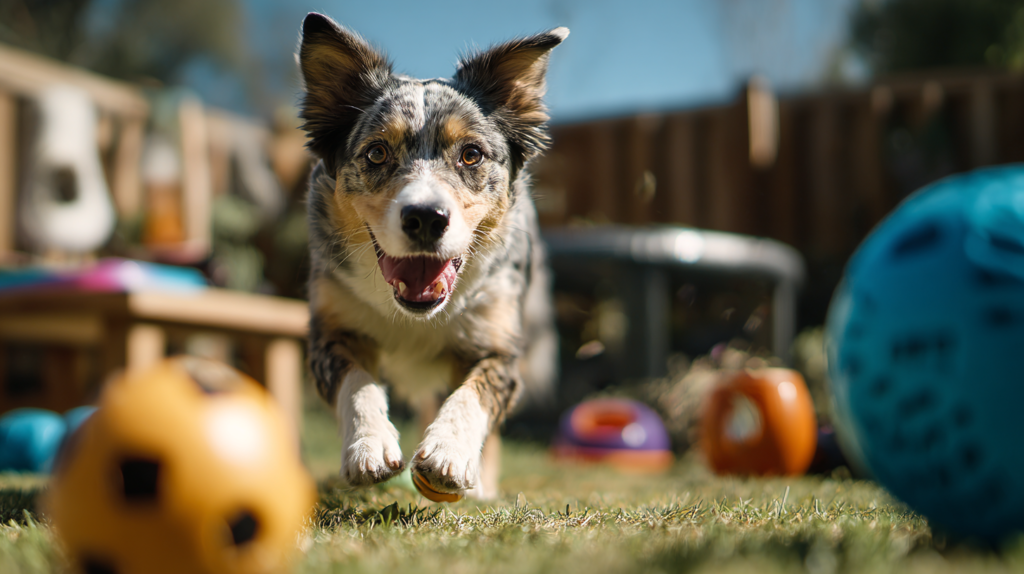
Physical Exercise Requirements by Species
Regular exercise stands as one of the most important pet care habits for preventing obesity and behavioral problems. The exercise needs vary significantly depending on your pet:
- Dogs: Requirements range from 30 minutes to 2+ hours daily depending on breed, age, and health status. Working and sporting breeds typically need more exercise than toy breeds.
- Cats: Benefit from 15-30 minutes of interactive play daily, ideally split into multiple sessions.
- Small mammals: Need safe, supervised time outside their enclosures daily for exploration and exercise.
- Birds: Require at least 1-2 hours daily outside their cages in a safe environment to stretch their wings and explore.
- Reptiles: Need appropriate space and temperature gradients to move between warm and cool areas.
A longitudinal study conducted by Tufts University found that dogs receiving adequate daily exercise lived an average of 2.5 years longer than their sedentary counterparts, demonstrating the profound impact of this pet care habit.
Mental Enrichment Strategies
Physical exercise alone isn’t enough—mental stimulation is equally important for preventing destructive behaviors and cognitive decline. Consider these enrichment activities as part of your pet care habits:
- Puzzle feeders and toys: Force pets to problem-solve for treats or food
- Training sessions: Even 5-10 minutes daily can mentally engage your pet
- Rotating toys: Prevents boredom by keeping playthings novel and interesting
- Sensory experiences: New smells, sounds, textures, and environments stimulate your pet’s brain
- Social interaction: For social species, interaction with other animals can provide valuable mental stimulation
“Environmental enrichment is just as important as physical exercise,” explains animal behaviorist Dr. Karen Thompson. “It satisfies natural behaviors like hunting, foraging, and exploring, which are crucial for your pet’s psychological well-being.”
Creating an Exercise and Enrichment Schedule
Consider this sample schedule for incorporating exercise and enrichment into your daily pet care habits:
- Morning: 15-minute walk/play session before work
- Mid-day: Puzzle feeder for lunch to provide mental stimulation
- Evening: Longer exercise session (30+ minutes) plus training
- Before bed: Calm play or bonding activity
For working pet parents, interactive toys like automatic ball launchers or treat-dispensing cameras can help supplement exercise during your absence.
3. Maintaining Regular Veterinary Care
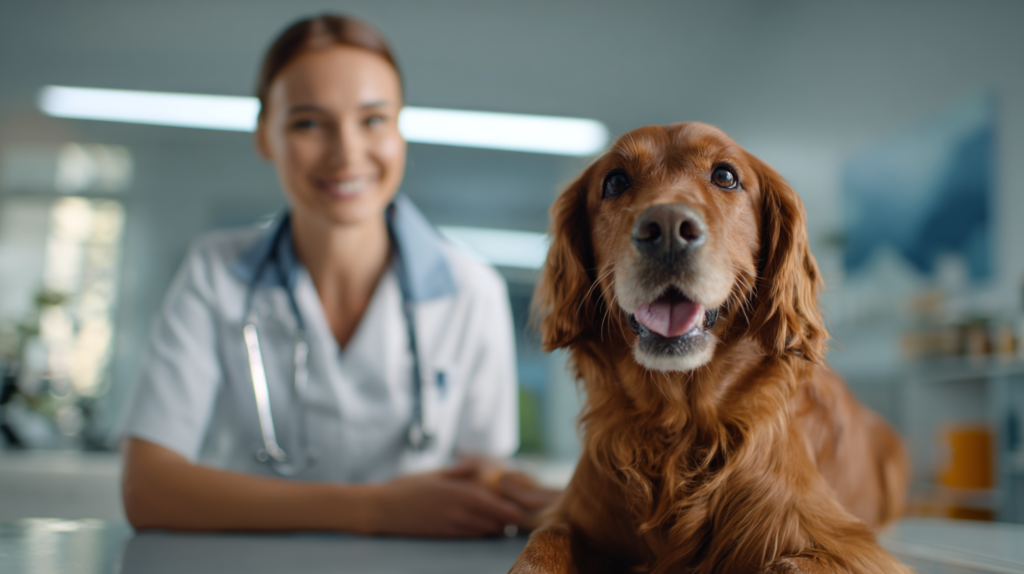
Preventive Healthcare Schedule
Regular veterinary visits are among the most critical pet care habits that many owners unfortunately neglect. According to the American Animal Hospital Association, preventive care can extend your pet’s life by 3-5 years.
A comprehensive preventive care schedule includes:
- Annual wellness exams: Even for healthy pets
- Semi-annual exams: For senior pets or those with chronic conditions
- Vaccinations: Following your veterinarian’s recommended schedule
- Parasite prevention: Year-round protection against fleas, ticks, heartworm, and intestinal parasites
- Dental check-ups: Annual dental examinations and professional cleanings as recommended
Dr. Robert Wilson, DVM, notes that “many serious health conditions show subtle symptoms that only a veterinarian can detect during routine examinations. By the time obvious symptoms appear, the condition is often more advanced and costly to treat.”
At-Home Health Monitoring
Between veterinary visits, implementing regular health checks as part of your pet care habits can help you spot potential issues early:
- Weekly body checks: Run your hands over your pet’s body to feel for lumps, bumps, or sensitive areas
- Dental observations: Check for tartar buildup, red gums, or bad breath
- Weight monitoring: Monthly weigh-ins can help track gradual changes
- Behavior tracking: Note changes in energy, appetite, thirst, elimination habits, or sleep patterns
“Teaching your pet to accept handling from an early age makes these checks easier and less stressful,” advises veterinary technician Maria Gonzalez. “It also strengthens your bond and builds trust.”
Creating a Pet Health Record
Maintaining organized health records ranks among the most valuable pet care habits for ensuring continuity of care. Consider keeping a digital or physical file containing:
- Vaccination history
- Medication records
- Test results
- Weight history
- Behavioral notes
- Dietary information
- Emergency contact information
Many veterinary practices now offer online portals or apps that help you track this information seamlessly. If yours doesn’t, apps like PetDesk or VitusVet can help you stay organized.
4. Grooming and Hygiene Routines
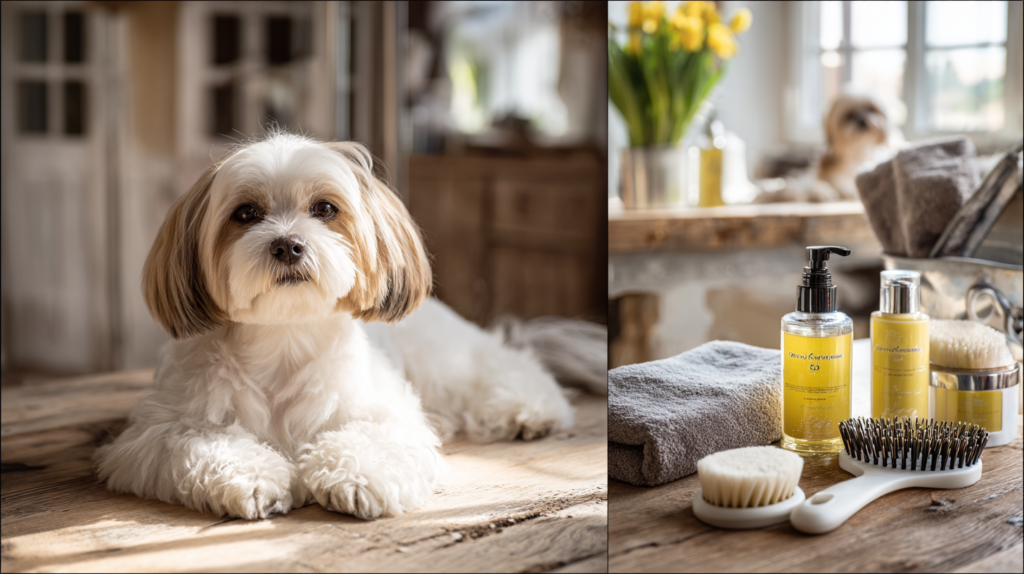
Species-Specific Grooming Needs
Grooming requirements vary widely based on species and breed, but establishing regular grooming routines stands as one of the most beneficial pet care habits for several reasons:
- Prevents matting and skin infections
- Reduces shedding and dander in your home
- Provides opportunity to check for parasites, lumps, or skin issues
- Strengthens the human-animal bond
- Acclimates pets to handling, making veterinary visits less stressful
Here’s a breakdown of basic grooming needs by pet type:
| Pet Type | Brushing Frequency | Bathing Frequency | Additional Care |
| Short-haired dogs | Weekly | Every 2-3 months | Nail trims every 4-6 weeks, ear cleaning monthly |
| Long-haired dogs | 2-3 times weekly | Every 4-6 weeks | Nail trims every 4-6 weeks, ear cleaning monthly |
| Cats | 2-3 times weekly | Rarely (as needed) | Nail trims every 2 weeks |
| Long-haired rabbits | Daily | Spot cleaning only | Nail trims every 6-8 weeks |
| Guinea pigs | Weekly | Rarely (as needed) | Nail trims every 4-6 weeks |
| Birds | No brushing | Provide bathing water | Wing, nail, and beak trims as needed |
Dental Care Essentials
Dental hygiene forms a critical component of pet care habits that is often overlooked. According to the American Veterinary Dental College, over 80% of dogs and 70% of cats show signs of dental disease by age three.
Effective at-home dental care includes:
- Toothbrushing: Ideally daily, using pet-specific toothpaste (never human toothpaste)
- Dental chews and toys: Look for those with the Veterinary Oral Health Council (VOHC) seal of approval
- Water additives: Can help reduce plaque formation between brushings
- Regular inspection: Check for redness, swelling, bad breath, or discolored teeth
“Starting dental care early in your pet’s life is ideal,” recommends veterinary dentist Dr. Amanda Chen, “but it’s never too late to begin this important pet care habit. Even older pets can be gradually acclimated to toothbrushing with patience and positive reinforcement.”
DIY vs. Professional Grooming
While many aspects of grooming can be handled at home, some tasks may require professional assistance based on your comfort level and your pet’s specific needs:
Typically DIY:
- Regular brushing
- Basic ear cleaning
- Teeth brushing
- Paw care
Consider Professional:
- Full haircuts for dogs with continuously growing hair
- De-matting severely tangled coats
- Anal gland expression
- Complex nail trims (dark nails, very anxious pets)
Groomer Jessica Martinez advises, “Even if you utilize professional services, maintaining regular at-home grooming pet care habits between appointments will keep your pet more comfortable and make professional grooming sessions go more smoothly.”
5. Creating a Safe Home Environment
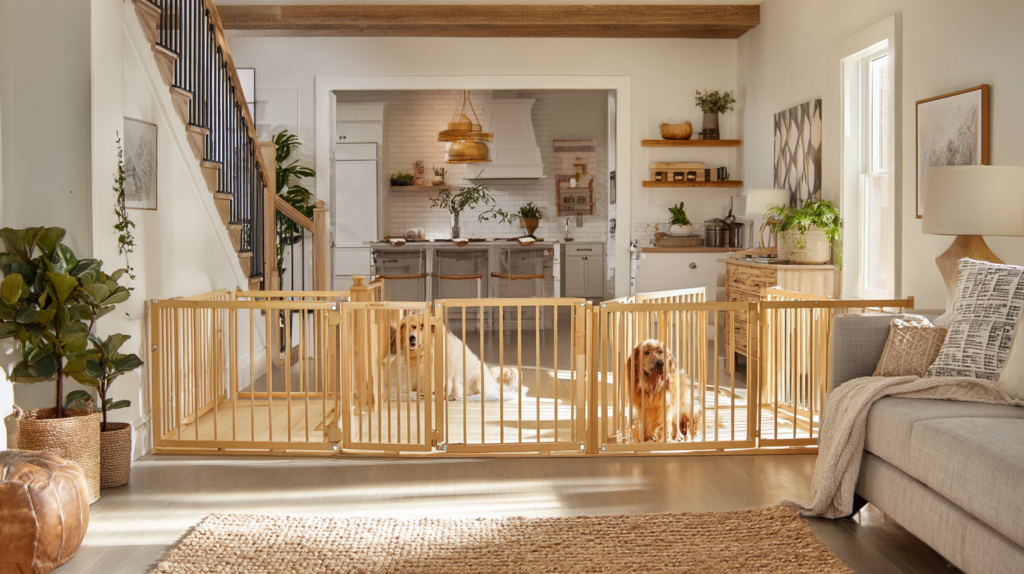
Pet-Proofing Fundamentals
Creating and maintaining a safe living environment ranks among the most important pet care habits for preventing accidents and emergencies. The ASPCA Animal Poison Control Center receives over 380,000 calls annually regarding potential poisonings, many of which could be prevented through proper pet-proofing.
Essential pet-proofing measures include:
- Secure toxic substances: Store cleaning products, medications, automotive fluids, and pesticides in inaccessible cabinets
- Identify and remove toxic plants: Common houseplants like lilies, sago palms, and philodendrons can be lethal to pets
- Eliminate choking hazards: Keep small objects, toys with removable parts, and string-like items out of reach
- Cover garbage cans: Use pet-proof containers for trash and compost
- Secure windows and balconies: Install sturdy screens to prevent falls
- Manage cords and cables: Use cord covers or bitter apple spray to discourage chewing on electrical cords
Creating Pet-Friendly Spaces
Beyond removing hazards, positive pet care habits include creating designated spaces that meet your pet’s natural needs:
- Resting areas: Multiple comfortable beds or perches away from drafts and high-traffic areas
- Scratching outlets: For cats, provide appropriate scratching surfaces to protect furniture
- Private spaces: Create “retreat zones” where pets can escape stressful situations
- Elimination areas: Maintain clean litter boxes, outdoor potty areas, or appropriate substrate for reptiles and small mammals
- Temperature control: Ensure pets have access to shade and water in warm weather and warm shelter in cold weather
“Animals need both security and environmental enrichment,” explains veterinary behaviorist Dr. Lisa Martinez. “Creating spaces that allow for both is a fundamental pet care habit that prevents stress-related behavioral problems.”
Emergency Preparedness
Responsible pet ownership includes preparing for emergencies as part of your pet care habits:
- Post emergency veterinary contacts in a visible location
- Keep a pet first aid kit accessible
- Prepare an evacuation plan that includes your pets
- Ensure proper identification (microchips, ID tags) is up to date
- Consider pet insurance or establish an emergency fund for unexpected veterinary expenses
A survey by the American Pet Products Association found that households with emergency plans specifically including their pets were three times more likely to successfully evacuate with their animals during disasters compared to those without such plans.
6. Training and Socialization Practices
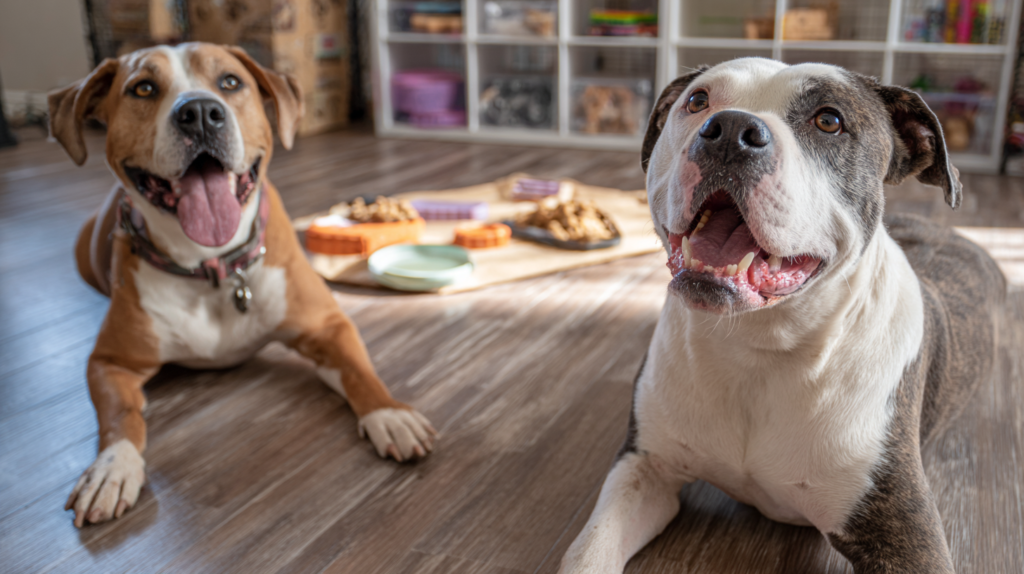
The Foundation of Positive Reinforcement
Implementing consistent training using positive reinforcement stands as one of the most valuable pet care habits for creating a harmonious household. Dr. Sophia Williams, certified animal behaviorist, explains: “Positive reinforcement training isn’t just about teaching commands—it’s about building communication and trust between you and your pet.”
Key principles of positive reinforcement include:
- Rewarding desired behaviors immediately
- Using high-value rewards (special treats, praise, play)
- Ignoring or redirecting unwanted behaviors rather than punishing
- Breaking complex behaviors into manageable steps
- Keeping training sessions short and ending on successful notes
- Maintaining consistency in cues and expectations
A landmark study published in the Journal of Veterinary Behavior found that dogs trained using positive reinforcement methods showed significantly lower stress levels and higher learning retention compared to those trained with aversive methods.
Species-Appropriate Socialization
Proper socialization as a core pet care habit helps prevent fear and aggression while building confidence. The critical socialization periods vary by species:
- Dogs: Primary socialization period from 3-14 weeks of age
- Cats: Primary socialization period from 2-7 weeks of age
- Small mammals: Often within the first few weeks of life
- Birds: Ongoing process throughout life
Even after these critical windows, continued exposure to new experiences, people, animals, and environments remains an important pet care habit throughout your pet’s life.
Basic Training for All Pets
While training is most commonly associated with dogs, establishing basic training as part of your pet care habits benefits all companion animals:
- Target training: Teaching pets to touch a target (like your hand or a stick) can be used with nearly any species
- Crate/carrier training: Helps reduce stress during travel or emergencies
- Name recognition: Getting your pet’s attention is fundamental to all other training
- Handling tolerance: Teaching pets to accept handling for grooming and veterinary care
“Even reptiles and fish can be trained using positive reinforcement,” notes exotic animal specialist Dr. James Chen. “This engagement provides mental stimulation while making handling and care procedures less stressful.”
For multi-pet households, training should include appropriate inter-species interactions and boundaries, creating a more harmonious home environment.
7. Building Routine Health Monitoring and Preventive Care
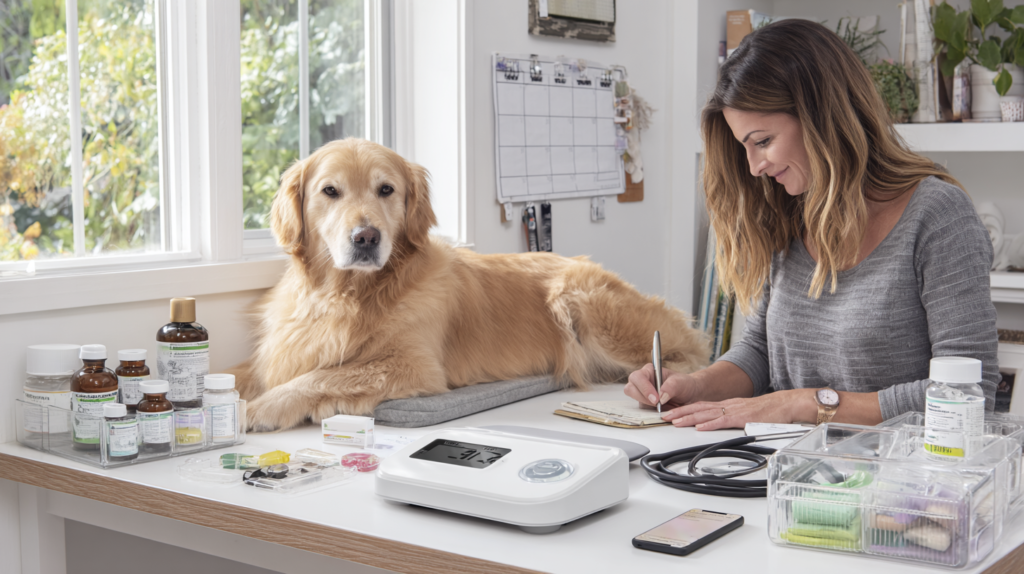
Daily Observation Practices
Developing observation skills as part of your daily pet care habits enables you to detect subtle changes that might indicate health issues. The Pet Health Network recommends a “head-to-tail” approach:
- Eyes: Check for clarity, discharge, or redness
- Ears: Look for debris, odor, or excessive scratching
- Nose: Note any discharge or changes in moisture level
- Mouth: Observe gum color, bad breath, or difficulty eating
- Skin/coat: Feel for lumps, parasites, or changes in texture
- Body condition: Monitor weight and muscle tone
- Mobility: Watch for limping, stiffness, or reluctance to perform normal activities
- Elimination: Note changes in frequency, appearance, or behavior
The daily observations of an attentive pet parent often provide the earliest warning signs of developing health issues,” explains veterinarian Dr. Thomas Wilson. “Making these checks part of your pet care habits can literally add years to your pet’s life.
Parasite Prevention Protocols
Establishing consistent parasite prevention ranks among the most essential pet care habits for protecting both pet and human health. A comprehensive parasite prevention program includes:
- External parasites: Year-round prevention for fleas and ticks
- Internal parasites: Regular deworming or testing based on your veterinarian’s recommendations
- Heartworm prevention: Monthly preventives for dogs and cats in endemic areas
- Environmental management: Regular cleaning of bedding, prompt waste removal, and yard maintenance
The Companion Animal Parasite Council reports that millions of pets remain unprotected against preventable parasitic diseases, highlighting the importance of making this a non-negotiable pet care habit.
Record-Keeping Systems
Maintaining organized health records completes our essential pet care habits list. Effective record-keeping systems help you:
- Track patterns in health, behavior, and weight over time
- Remember when medications or preventives are due
- Provide complete information during veterinary visits
- Make informed decisions about nutrition and care
- Prepare for emergencies with all relevant information in one place
While digital record-keeping apps offer convenience, even a simple notebook can be effective,” suggests veterinary practice manager Emily Torres. “The key is consistency in maintaining these records as part of your regular pet care habits.
Essential Products for Supporting Healthy Pet Care Habits
Establishing good pet care habits is easier with the right tools. Consider these essential products for each category:
Nutrition and Feeding
- High-quality food appropriate for species, age, and health status
- Slow-feeder bowls to prevent gulping
- Puzzle feeders for mental stimulation
- Elevated feeders for senior pets or those with certain health conditions
- Food storage containers to maintain freshness
Exercise and Enrichment
- Species-appropriate toys that rotate regularly
- Puzzle toys and treat-dispensing devices
- Climbing structures for cats
- Appropriate exercise equipment (harnesses, leashes, exercise pens)
- Interactive toys that stimulate natural behaviors
Grooming Supplies
- Species-appropriate brushes and combs
- Pet-safe shampoo and conditioner
- Nail trimmers designed for your pet’s size
- Pet-specific toothbrush and toothpaste
- Ear cleaning solution recommended by your veterinarian
Home Safety
- Baby gates or pet barriers for restricting access
- Pet-proof cabinet locks
- Cord protectors for electrical safety
- Window screens and balcony protections
- Pet first-aid kit
For more expert product recommendations tailored to your specific pet’s needs, visit BlithePet.com — your trusted source for pet wellness.
FAQ: Common Questions About Pet Care Habits
How long does it take to establish new pet care habits?
Just like humans, pets typically require 3-4 weeks of consistent practice to establish new routines. However, this can vary based on the pet’s age, previous experiences, and individual temperament. For more challenging habits like toothbrushing, the adjustment period may be longer. Consistency and positive reinforcement are key to successful habit formation.
What are the most commonly overlooked pet care habits?
Dental care, weight management, and mental enrichment are frequently overlooked aspects of pet care. Many pet parents don’t realize that dental disease affects over 80% of adult pets and can impact overall health. Similarly, providing proper mental stimulation through enrichment activities is just as important as physical exercise for preventing behavioral problems.
How should pet care habits change as my pet ages?
As pets enter their senior years (generally around 7-10 years for dogs, 10-12 for cats), their needs change. Older pets benefit from:
- More frequent veterinary checkups (twice yearly)
- Adjusted exercise routines (shorter, more frequent sessions)
- Enhanced joint support through appropriate bedding and possibly supplements
- More diligent monitoring of water intake, appetite, and elimination
- Adaptive equipment like steps or ramps for furniture access
Can I maintain good pet care habits if I work full-time?
Absolutely! Many working pet parents successfully maintain excellent pet care habits. Consider these strategies:
- Use pet cameras for remote interaction
- Hire dog walkers or pet sitters for midday visits
- Utilize puzzle feeders and automated dispensers
- Create an enriched environment with multiple toys and perches
- Establish consistent morning and evening routines
- Consider doggy daycare or playdate arrangements
How do I balance pet care habits for multiple pets with different needs?
In multi-pet households:
- Create separate feeding stations to prevent resource guarding
- Establish individual time with each pet daily
- Use training to manage group dynamics
- Provide separate resting spaces where each pet can retreat
- Consider species-specific needs while creating shared schedules
Conclusion:
Creating Your Pet Care Habits Action Plan
Establishing consistent pet care habits creates the foundation for a lifetime of health and happiness with your animal companions. By implementing the seven key areas we’ve explored—nutrition, exercise, veterinary care, grooming, safety, training, and health monitoring—you’ll significantly enhance your pet’s quality of life while deepening your bond.
Remember that perfect pet care isn’t about perfection but rather consistent attention to the fundamentals. Even small improvements in your pet care habits can yield significant benefits over time. Start by selecting one area to focus on, establish that routine firmly, then gradually incorporate additional habits.
The investment you make in developing these pet care habits will return dividends in fewer veterinary emergencies, reduced behavioral problems, and most importantly, more quality years with your beloved companion.
Have a similar experience with your pet? Share it in the comments below!

